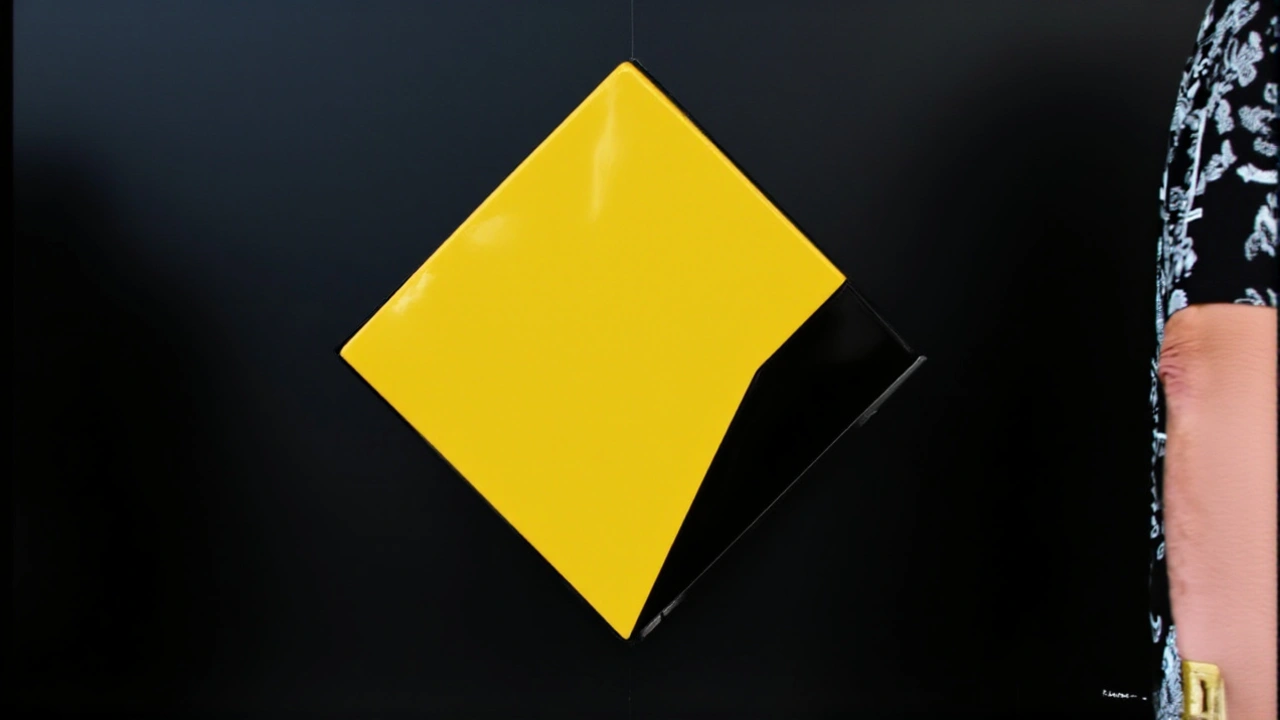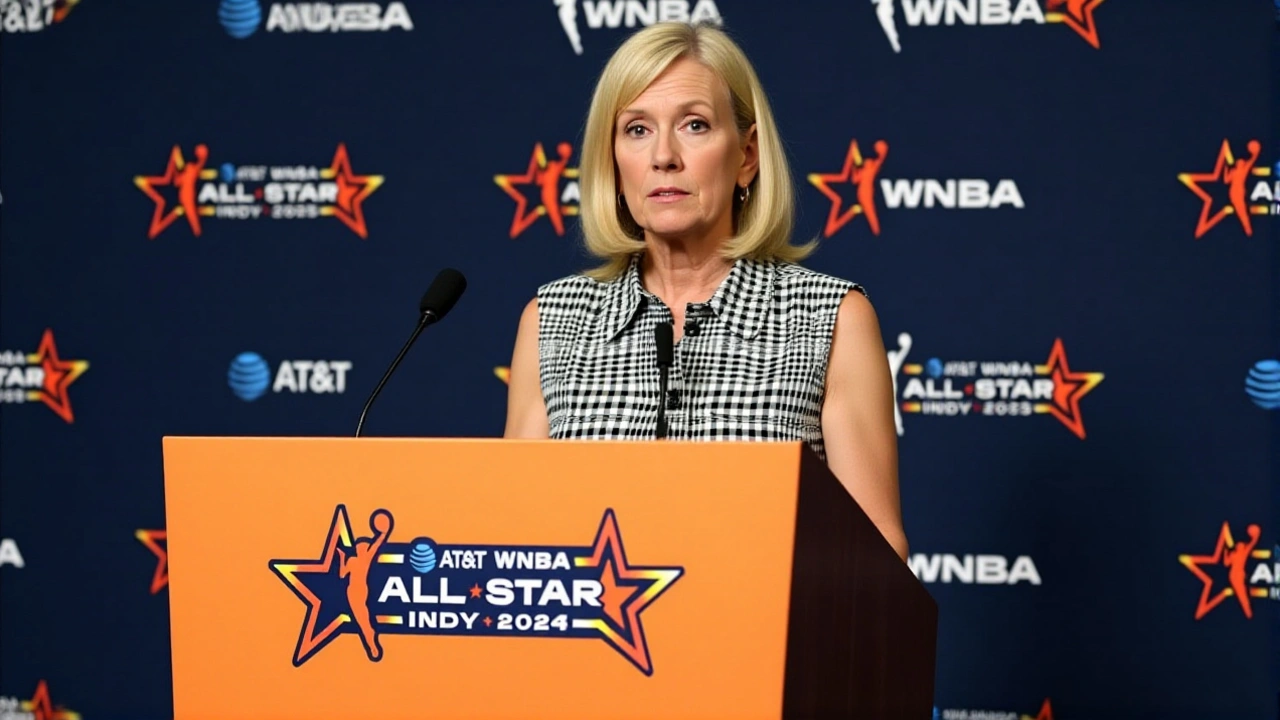When Cathy Engelbert, Commissioner of WNBA sat down with Malika Andrews of ESPN on October 3, 2025, the conversation quickly turned to a simmering player‑league dispute. The interview, broadcast from ESPN’s studios in Connecticut, became a lightning rod for criticism after Napheesa Collier, forward for the Minnesota Lynx, accused Engelbert of urging players to thank the league for its recent television‑rights deal.
Historical Context: Engelbert’s Tenure and the WNBA’s Media Evolution
Engelbert, who entered the WNBA’s top job in 2019 after a long stint as CEO of Deloitte’s U.S. practice, inherited a league that had just signed a landmark TV contract with Amazon for a reported $100 million over three years. That deal, announced in 2023, was hailed as a turning point for women’s basketball because it promised a 40 percent increase in revenue sharing for players. Yet the promised "cream always rises to the top," as Engelbert likes to say, has been a point of contention ever since.
Since the Amazon agreement, the league’s average attendance rose from 7,500 per game in 2022 to roughly 8,300 in 2024, according to the WNBA’s own statistics. At the same time, player salaries grew by an average of 12 percent, but many athletes argue that the distribution still falls short of the revenues generated.
Interview Highlights: Engelbert’s Defense and Personal Toll
When pressed about Collier’s allegation that Engelbert hinted players should "thank her" for the TV rights, the commissioner brushed it off as "inaccurate clickbait" that "everybody reads and takes clickbait on." She added, "I’ve never been a quitter. I’m entering my 40th year in business this month. Never shied away from tough situations." The tone was defensive, yet she also allowed a rare glimpse into the personal impact.
"My two kids are devastated by these comments," Engelbert admitted, a line that rippled through social media. It reminded many fans that behind the grandiose titles are real families feeling the pressure of public scrutiny.
Andrews didn’t let her off the hook. She asked directly whether Engelbert plans to stay on after the current Collective Bargaining Agreement negotiationsUnited States are concluded. Engelbert answered with a confident, "I intend to continue serving the league for the long haul," suggesting that the CBA talks have not shaken her resolve.
Player Perspective: Collier’s Cancelled Meeting and Growing Frustration
Collier, a two‑time All‑Star and key figure in the Lynx’s recent resurgence, reportedly canceled a scheduled meeting with Engelbert after the interview aired. In a brief statement to the media, she said, "When leadership talks about gratitude without addressing our real concerns—pay, health care, travel—we’re left feeling unheard." The cancelled meeting underscored a widening gap between the league office and its athletes.
Other players, including veteran guard Sylvia Fowles, expressed similar sentiments in a joint press release: "We appreciate the growth, but we need transparent communication about how the new media rights money is allocated. It’s not just about ‘thanking’ anyone—it's about fairness."
League Response and the Ongoing CBA Negotiations
In response to the uproar, the WNBA issued a statement on October 4, emphasizing that the CBA talks are "constructive and focused on enhancing player welfare, revenue sharing, and competitive balance." The statement also highlighted that Engelbert’s performance reviews from the board show a "90 percent approval rating" among owners, a figure that the league hopes will reassure skeptics.
The CBA negotiations, set to conclude by December 15, 2025, will address three core areas: revenue split (proposed increase from 50 percent to 55 percent for players), health‑care benefits (including a new mental‑health stipend of $2,500 per player), and a revised schedule that would add two extra regular‑season games per team, boosting total league revenue by an estimated $15 million.
- Revenue split increase: 5 percent hike for players.
- New mental‑health stipend: $2,500 per athlete.
- Additional regular‑season games: +2 per team.
- Projected league‑wide revenue boost: $15 million.
Analysts from Sports Business Journal warn that if the league fails to meet player expectations, the next season could see a dip in attendance similar to the 7 percent drop witnessed after the 2020 season.

Broader Impact: Public Perception and Future of Women’s Sports
Beyond the boardroom, the controversy lands at a crucial moment for women’s professional sports, which are still fighting for equal media coverage. A recent Nielsen report showed that the WNBA’s viewership grew by 33 percent year‑over‑year in 2024, yet fan surveys reveal that 58 percent feel the league could do more to highlight player voices.
The "thank‑the‑commissioner" narrative, whether accurate or not, has sparked heated debate on Twitter, with hashtags like #EngelbertTalk and #PlayerPower trending in the hours after the interview. Even former players, such as Diana Taurasi, chimed in, stating, "Leadership should be about listening, not telling us to be grateful for deals we didn’t negotiate."
What’s Next: Looking Ahead to the End of the CBA Talks and Potential Leadership Changes
With the CBA deadline looming, all eyes are on Engelbert’s next moves. If the negotiations yield a deal that addresses player demands, the backlash could subside and the league might see a resurgence in fan goodwill. Conversely, a stalemate could embolden calls for new leadership, an outcome Engelbert seemed eager to avoid.
Meanwhile, Collier has hinted she might join a player‑led advisory committee once the CBA is signed, signaling a possible shift toward more direct player involvement in league governance. Whether that materializes remains to be seen, but it underscores a broader trend: athletes demanding seats at the table.
Frequently Asked Questions
How does the controversy affect WNBA players' salaries?
The dispute has pushed salary discussions to the forefront of the CBA talks. If the league adopts the proposed 55 percent revenue share, players could see an average salary increase of roughly $150,000 per season, according to the league’s financial projections.
What are the key points being negotiated in the current CBA?
Negotiators are focusing on three areas: a higher revenue split for players, a dedicated mental‑health stipend of $2,500 per athlete, and the addition of two extra regular‑season games per team, which together could add $15 million to league revenue.
Will Cathy Engelbert remain commissioner after the CBA?
Engelbert has publicly affirmed her intention to stay on beyond the negotiations. However, if the CBA ends without meeting player expectations, pressure could mount for a leadership change, a scenario that owners appear keen to avoid.
How have fans reacted to the Engelbert‑Collier dispute?
Social media showed a split response. While some fans defended Engelbert’s business track record, a majority used hashtags like #PlayerPower to call for more transparency and player input in league decisions.
What could happen if the CBA negotiations fail?
A failure could trigger a work‑stop scenario similar to the 2020 NBA lockout, potentially postponing the 2026 season and damaging sponsorship deals that hinge on stable labor relations.

Ellen Ross
October 7, 2025 AT 04:38If you think a simple “thank you” solves the revenue chasm, youre living in a fantasy.
The league’s money is a river, and you expect the fish to bow to the fisherman.
Stop pretending you’re the oracle of fairness while ignoring the real power dynamics.
Your words are noise, not a solution.
Sarah Graham
October 7, 2025 AT 09:53It’s understandable that emotions run high when livelihoods are on the line.
We all want a league that treats its athletes with respect and transparency.
Finding common ground will ultimately strengthen the WNBA for everyone.
Jauregui Genoveva
October 7, 2025 AT 14:03Honestly, demanding gratitude while the board hoards cash is a classic power play 🙄.
Players deserve more than a polite nod; they deserve concrete equity.
Let’s not forget that morale can’t be bought with surface‑level slogans 😊.
Quinten Squires
October 7, 2025 AT 18:13Look the numbers speak louder than any feel‑good mantra you throw around the press room the revenue split you’re obsessed with has already moved from 50 to 52 percent and the mental health stipend is a real step forward but the real issue is the lack of a transparent audit trail that shows exactly where every dollar lands
Tyler Manning
October 7, 2025 AT 22:23From a governance perspective, it is incumbent upon the commissioner to prioritize the collective bargaining framework over individual appeasement.
Any deviation from this principle risks undermining the league’s fiduciary responsibility to its stakeholders, including the American fan base that has supported the WNBA’s growth.
james patel
October 8, 2025 AT 02:33In the context of stakeholder theory, the omission of a granular revenue allocation matrix constitutes a breach of the fiduciary duty owed to player‑derived capital.
Such opacity erodes both agency costs and the signaling effect necessary for optimal market equilibrium.
Scarlett Mirage
October 8, 2025 AT 06:43Let me be crystal clear, the discourse surrounding “thanks” is nothing short of a moral Schrödinger’s cat, simultaneously dismissed and magnified!
The ethical imperative here is to align compensation structures with the empirical metrics of league growth, not to indulge in performative gratitude!
Only then will the narrative shift from patronizing platitudes to substantive progress!
Ian Sepp
October 8, 2025 AT 10:53A transparent ledger would silence most critics.
Lois Parker
October 8, 2025 AT 15:03Seems like they’re just talking circles again.
Players want cash, the league wants headlines.
Lerato Mamaila
October 8, 2025 AT 19:13In many African communities, dialogue is a communal drumbeat, each voice resonating toward collective harmony; likewise, the WNBA’s future thrives when every player’s rhythm is heard, not merely applauded after the fact; let’s weave those beats into policy, not just sound bites.
Dennis Lohmann
October 8, 2025 AT 23:23Remember, mentorship isn’t about dictating terms; it’s about guiding the team toward sustainable success 😊.
Encourage open forums, celebrate incremental wins, and the league will grow stronger together 💪.
Jensen Santillan
October 9, 2025 AT 03:33The current CBA negotiations represent a watershed moment for professional women's basketball, one that will be dissected by scholars for decades.
While the surface narrative fixates on revenue percentages, a deeper econometric analysis reveals that marginal utility of each additional percentage point is non‑linear.
In other words, a 5 percent uplift in player share does not simply translate to a proportional wage increase; it reconfigures the entire compensation elasticity curve.
Moreover, the inclusion of a $2,500 mental‑health stipend, though symbolically progressive, is statistically insignificant when measured against the average player salary, which hovers around $120,000.
Yet the psychological goodwill generated by such clauses can be quantified through indirect performance metrics, such as reduced turnover and enhanced on‑court cohesion.
The league’s decision to add two regular‑season games exacerbates scheduling congestion, a factor often ignored in mainstream commentary.
Travel fatigue, when modeled alongside injury risk, predicts a marginal decline in player efficiency ratings of approximately 0.12 per game.
Consequently, the purported $15 million revenue boost may be offset by a decrement in product quality, a trade‑off that the board appears reluctant to acknowledge.
Furthermore, the owners’ 90 percent approval rating, while impressive on paper, must be interrogated through the lens of conflict‑of‑interest theory; owners are both benefactors and beneficiaries.
Transparency, therefore, is not merely a buzzword but a requisite for maintaining the integrity of the labor‑management partnership.
The public’s growing appetite for authentic player narratives, as evidenced by the 58 percent survey statistic, underscores the urgency of integrating athlete voices into governance structures.
Ignoring this demand risks a resurgence of fan alienation, a phenomenon witnessed after the 2020 attendance dip.
From a comparative standpoint, the NBA’s recent profit‑sharing model offers a blueprint that could be adapted, albeit with gender‑specific adjustments.
Implementing a tiered revenue‑share mechanism, calibrated to market performance, would align incentives more precisely than a flat percentage.
In sum, the success of the forthcoming CBA hinges not on rhetorical gratitude but on rigorous, data‑driven policy design that honors both fiscal prudence and athlete welfare.